One of the reasons why The New York Times is able to catch up to its growing user base is its inclination towards technological advancements. That was evident when it leveraged the power of microservice architecture via a remodeled video publishing platform to scale with their newsroom demands. They also moved their infrastructure to the cloud which resulted in a stable and scalable email platform, powered by a suite of microservices, for sending emails to the readers.
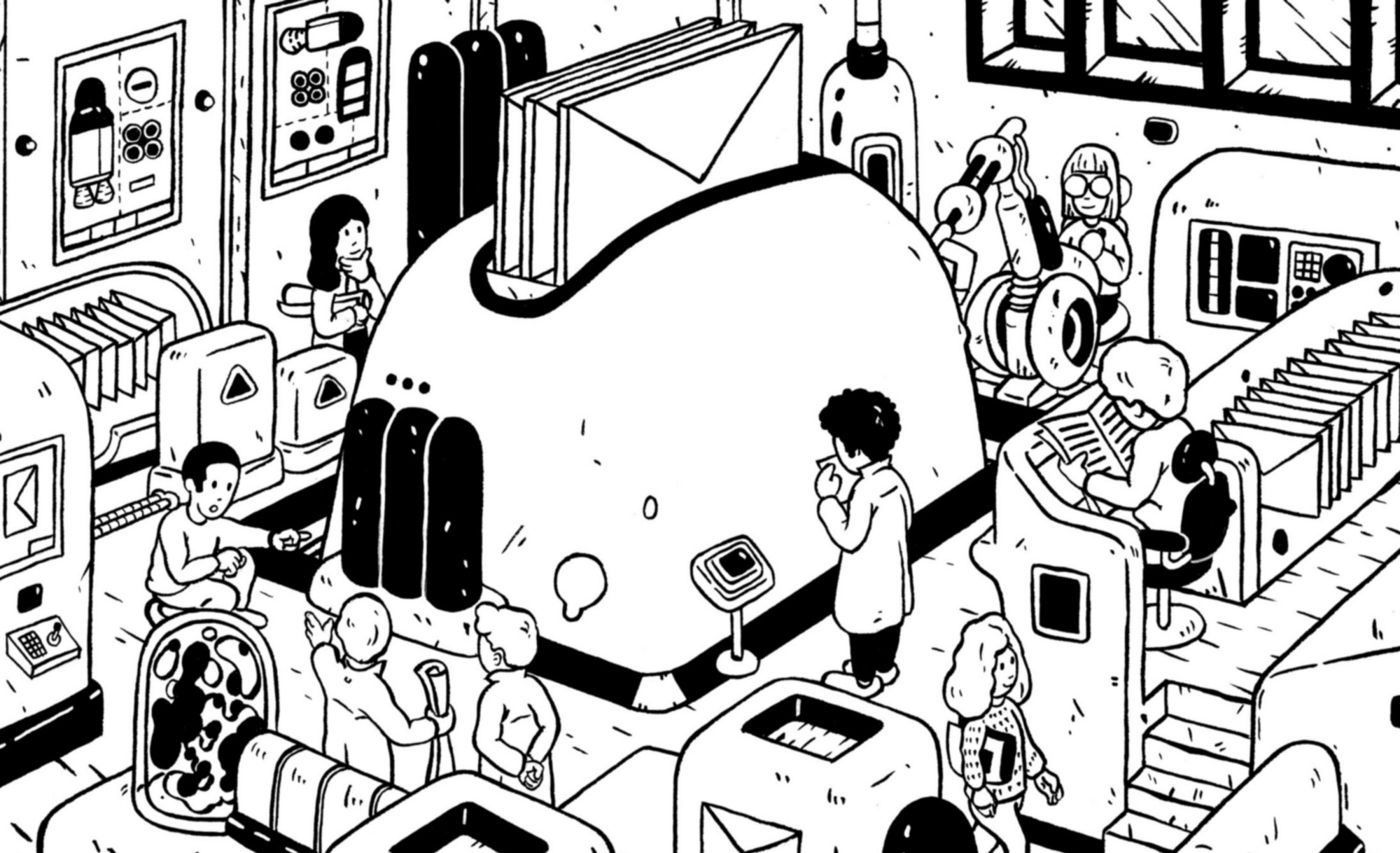
Why are big enterprises like The New York Times leaning towards the benefits of microservices architecture? Microservices has grown exponentially and holds an astronomical future for digital businesses. It will be interesting to see how traditional CMS like Drupal finds a place in the world of microservices based architecture. But before plunging into all that, one might wonder where did it originate from?
Tracing the roots in the UNIX world
New Relic has compiled an interesting and brief timeline of the evolution of microservices. It has its roots in the Unix world that takes us back to more than three decades ago.
As a term, microservices was first documented in 2011 by Martin Fowler
Service-oriented architecture (SOA), a design principle where services are offered to other components by application components via communication protocol over a network, was all the rage decades ago. Due to a superabundance of failures and costly implementations, the SOA earned a poor reputation and took a backseat. Martin Fowler, among others, has said that microservices are a new spin on SOA.
As a term, it was first documented in 2011 by Fowler at a software architects’ workshop.
In 2012, a presentation was given by James Lewis at the 33rd Degree in Krakow which was titled “Microservices - Java, the Unix Way”. This delineated microservices as a means of rapid software development by dividing and conquering and used Conway’s Law to structure teams.
Since that time, the adoption of microservice architecture has grown and many organizations are going for microservices as their default style for building enterprise applications.
Understanding the terminology
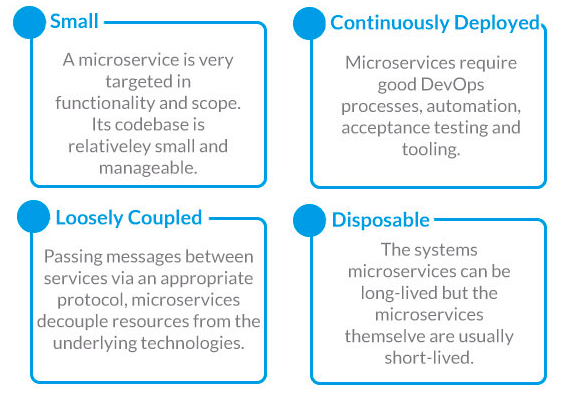
What are microservices? Microservices are an architecture for splitting a monolithic application into smaller pieces. Each of those pieces offers a certain function through a well-defined and carefully handled API.
The collection delivers the same overall business value like the monolithic application with the difference being these independently working individual pieces in microservices. That means they can be updated swiftly without impacting an entire application.
“The microservice architectural style is an approach to developing a single application as a suite of small services, each running in its own process and communicating with lightweight mechanisms, often an HTTP resource API. These services are built around business capabilities and independently deployable by fully automated deployment machinery. There is a bare minimum of centralized management of these services, which may be written in different programming languages and use different data storage technologies”. - Martin Fowler
"A microservice architectural style is an approach to develop a single application as a suite of small services, each running in its own process and communicating with lightweight mechanisms, often an HTTP resource API".
Netflix is an unsurpassed example of the adoption of microservices architecture. It moved from a traditional development model with several engineers producing a monolithic DVD-rental application to a microservices architecture. Small teams could focus on the end-to-end development of hundreds of microservices that work together to serve digital entertainment to millions of Netflix customers every day.
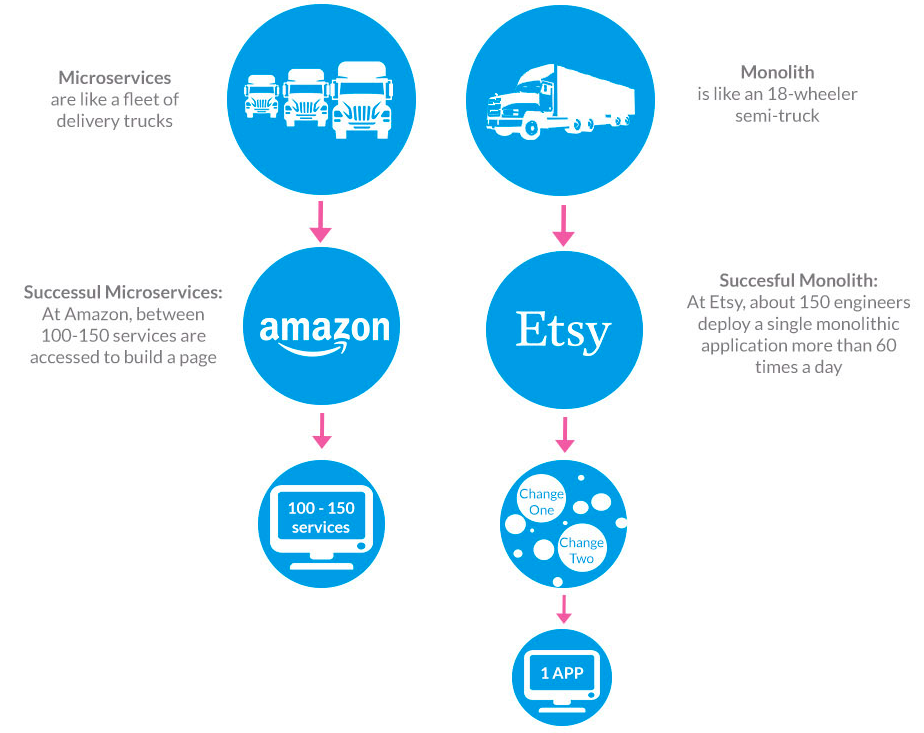
The main difference between monolithic vs microservices architecture, as can be seen in the depiction above, is that all the features and functionalities were under a single umbrella. That is, they were under a single instance sharing a single database. With microservices, each feature is allotted a different microservice, managing its own data, and performing a different set of functionalities.
How good or bad are microservices?
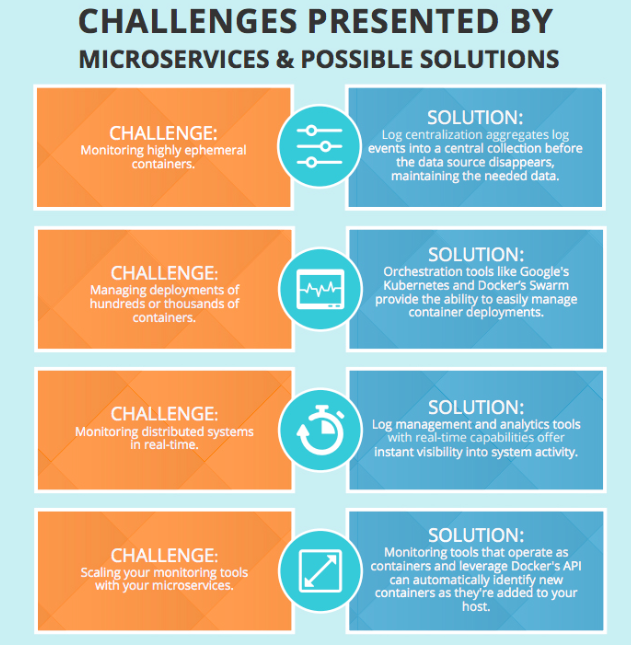
The benefits of a microservices architecture are laid out below:
- Autonomous deployments: You can update a service without having to redeploy the entire application and rollback or roll forward an update during mishaps. Fixing bugs and feature releases are much more manageable with fewer challenges.
- Autonomous development: Building, testing and deploying a service would need a single development team leading to perpetual innovation and swift release cadence.
- Small teams: Teams can lay their focus onto one service thereby simplifying the understanding of the codebase with the smaller scope for each service.
- Isolation of faults: Downtime in one of the services won’t affect the overall application. This does not mean that you get resiliency for free.
- Tech stack mixture: Technology that is deemed most fit for a service can be selected by the teams.
- Scalability at granular levels: Independent scaling of services is possible.
Some of the challenges are outlined below:
- Intricacy: More moving parts are there in microservice application than the equivalent monolithic application.
- Development and testing: Developing against service dependencies would need a different approach and testing service dependencies is difficult particularly when the application is evolving rapidly.
- The dearth of administration: The decentralized approach for building microservices may lead to numerous languages and frameworks thereby making it harder to manage.
- Network congestion and latency: Usage of granular services can result in more inter-service communication. Chances are that if the chain of service dependencies gets too elongated, additional latency can be a challenge.
- Data integrity: Data consistency can be a hurdle with each microservice responsible for its own data management and persistence.
- Management: Correlated logging across services can become a formidable task.
- Update issues: If not for a careful design, several services updating at a given time could result in backward or forward compatibility.
- Team skill-set: As highly distributed systems, microservices require a team with the right mix of skills and experience.
Taking Drupal into the context
Drupal is a monolith. How can it survive this trend of architecture based on microservices? However, Drupal, being an amazing content management framework, provides a great content editing experience and has been pioneering digital innovation. With that being said, the architecture can be used for the development and deployment of applications using Drupal.
Let’s see how Drupal can be put into the scheme of things.
Demonstration at DrupalCon Vienna 2017
A presentation held at DrupalCon Vienna 2017 demonstrated an effective way of integrating Drupal 8 in a microservices architecture.
Drupal 8 proved to be a useful content management framework for this implementing microservices architecture because of its:
- Symfony components,
- Composer to manage external dependencies,
- and the magnificent results of the Web Services and Context Core Initiative (WSCCI).
It exhibited the delegation of asynchronous work from Drupal to a set of very reactive applications written in Go with some assistance of RabbitMq queues. Elasticsearch was leveraged as a common data storage between services and REST endpoints were exposed where the endpoints could notify back to Drupal.
Furthermore, methods of connecting the websocket server to push and pull messages between services were shown. To run all these services in a controlled and replicable manner, the services of Ansible and Docker were extracted.
Demonstration at Drupal Developer Days Lisbon 2018
Another session at Drupal Developer Days Lisbon 2018 delineated how the citizen portal of the city of Reykjavik (Iceland) was relaunched using Drupal and microservices.
Incorporation of more than 100 web services was performed ranging from simple services like registering a dog or renewing a driver’s license to the intricate services like the admissions of children to school or updating the residential address.
Powered by Drupal 8, this new portal integrates the services with a microservices architecture using JSON Schema as a communication protocol. This was chosen to let centralized data collection and presentation in a single portal while simultaneously incorporating a heterogeneous landscape of services autonomously from one another.
Predictions ahead
Oracle’s Cloud Predictions 2018 report states that by 2020, the lion’s share of new applications will be powered by microservices architectures.
Open source has given a whopping push to the microservices architecture. Its several components support continuous integration and delivery pipelines, microservices platform architecture, containers, container management and orchestration, container registry service, and serverless capability.
Open source has given a whopping push to the microservices architecture
Adoption of cross-cloud containers like Docker and Kubernetes is on the upwards trajectory and developers consider an open cloud stack to prevent vendor lock-in.
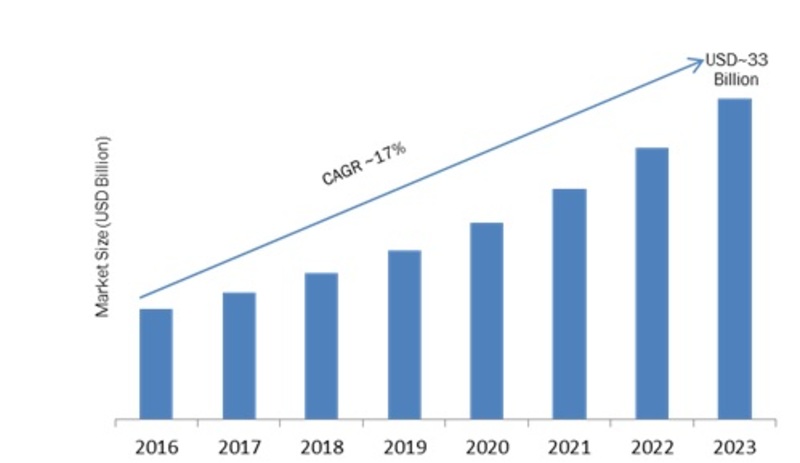
According to a report on Market Research Future, the microservices architecture market is expected to reach $32.01 billion by 2023 with a Compound Annual Growth Rate (CAGR) of around 16.17% during the forecast period.
Another report on Research and Markets for the forecast period of 2017 to 2023 states that as far as the ‘Market Analysis’ is concerned, the rise in the Cloud adoption is integral for the microservices market. This is because its architectures function on smaller and simpler services. Also, there is a high demand from North American companies as they have implemented it in e-commerce, financial, and travel services. This has helped in storing data and information cost-effectively and enhanced the efficacy, agility and scalability.
The report on Research and Markets has an interesting ‘Countries and Vertical Analysis’ vis-à-vis microservices. Most of the major players are in the American region with the prominent vendors covered in the report include the likes of Cognizant, IBM Corporation, Datawire, Salesforce, Infosys Ltd., MuleSoft Inc., and Software AG. Japan, the US, and China are expected to witness tremendous growth in microservices adoption.
Conclusion
Microservices architectures streamline the overall application development lifecycle leading to quicker testing, higher quality, and more releases. Such an architecture can be hugely useful for the efficient management of Drupal-based projects. Innovation has always been something Drupal is greatly supportive of. Adopting a microservice architecture for Drupal development is possible and is extremely fruitful.
Organizations should be wary of their digital business ecosystem and should understand the challenges that they might have to encounter during their adoption. OpenSense Labs has been in the constant pursuit of bringing a positive change for our valued partners with our expertise in Drupal.
Contact us at [email protected] to know more about the benefits of microservices architectures and its value to your organizational setup.
Subscribe
Related Blogs
Inside the Drupal AI Summit: Themes, Speaker and What To Expect

“ The web is changing fast, and AI is rewriting the rules. It writes content, builds pages, and answers questions directly,…
FOST and Drupal AI Initiative: Next Era of Responsible AI

Three years after the launch of generative AI tools marked a new age for artificial intelligence, almost 90% of survey…
Drupal AI Ecosystem Part 5: AI Content Suggestions

Drupal has steadily evolved from being just a content management system into a flexible platform that incorporates emerging…




